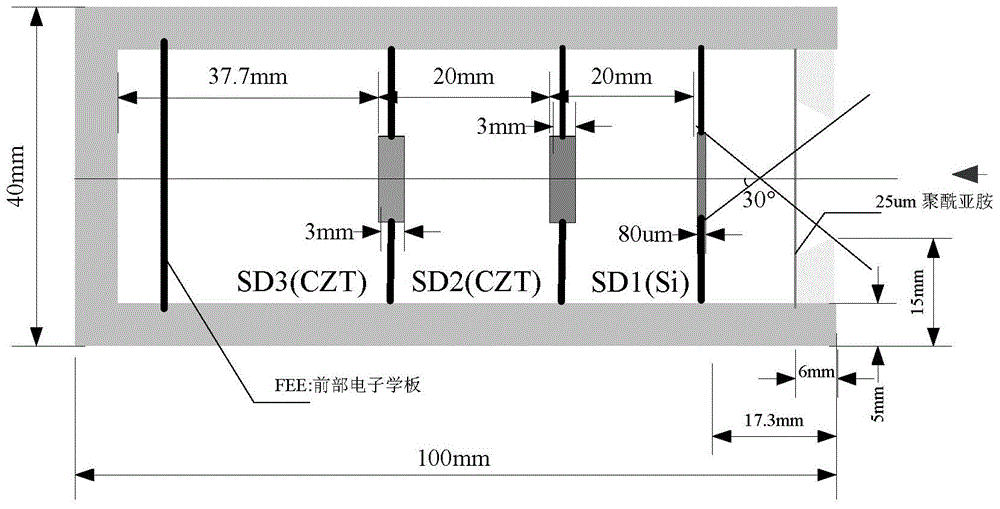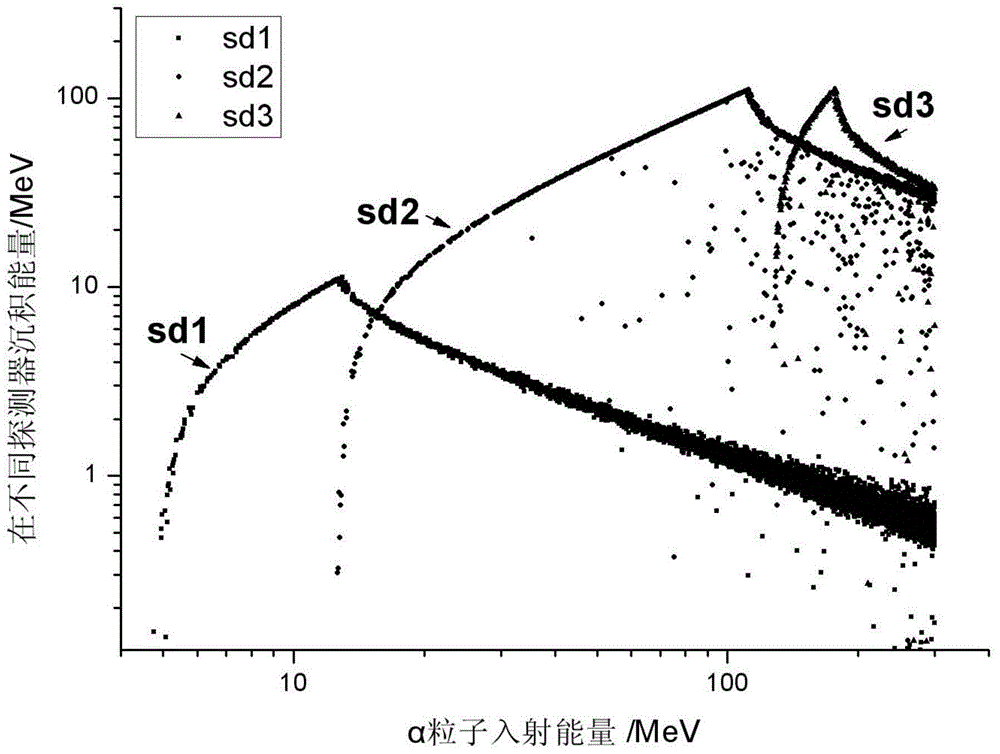Space particle detector and data collecting and processing method thereof
A space particle and data processing unit technology, applied in radiation intensity measurement and other directions, can solve the problems of large volume and weight, and the lower limit of detection energy, and achieve the effects of small footprint, reduced circuit area, and low power consumption
- Summary
- Abstract
- Description
- Claims
- Application Information
AI Technical Summary
Problems solved by technology
Method used
Image
Examples
Embodiment Construction
[0045] The present invention will be further described in detail below in conjunction with the accompanying drawings. The radiation detector of the present invention can be designed as a three-layer telescope structure (the detectors are concentrically arranged in a row), and the distance between SD1 and SD2 is relatively close, and the distance between SD3 and SD2 is relatively long. Such as figure 2 shown. The whole particle detector consists of three layers of detectors, which are: the first layer of partial energy detector dE, which is a relatively thin Si detector, such as Si, Si-PIN, and gold-silicon surface barrier detectors of 50 microns to 200 microns ; The second layer of energy detector E, using a thicker CZT detector (CZT CdZnTe cadmium zinc telluride crystal) to measure the approximate total energy E of charged particles, can also use 3 ~ 15 mm thick CZT, Si, Si-PIN, Gold-silicon surface barrier detectors or centimeter-scale scintillator detectors (such as CsI);...
PUM
| Property | Measurement | Unit |
|---|---|---|
| Thickness | aaaaa | aaaaa |
Abstract
Description
Claims
Application Information
 Login to View More
Login to View More - R&D
- Intellectual Property
- Life Sciences
- Materials
- Tech Scout
- Unparalleled Data Quality
- Higher Quality Content
- 60% Fewer Hallucinations
Browse by: Latest US Patents, China's latest patents, Technical Efficacy Thesaurus, Application Domain, Technology Topic, Popular Technical Reports.
© 2025 PatSnap. All rights reserved.Legal|Privacy policy|Modern Slavery Act Transparency Statement|Sitemap|About US| Contact US: help@patsnap.com



